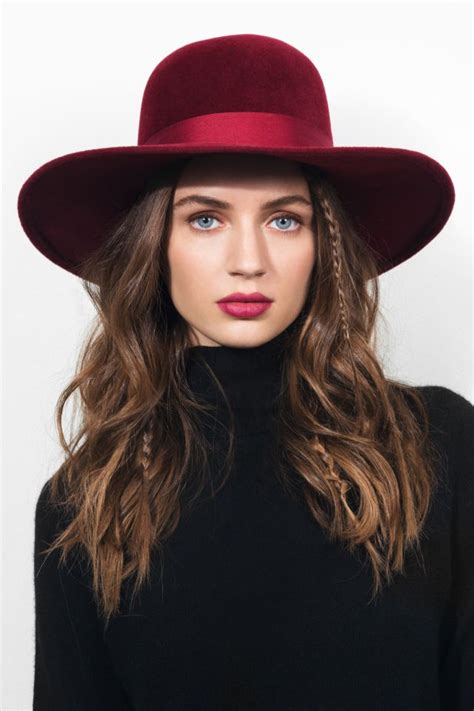Introduction
Hat hair, the nemesis of many a stylish individual, is a frustrating phenomenon that occurs when hair becomes matted, tangled, or crushed after wearing a hat. While hats offer protection from the elements and can elevate an outfit, they can also leave your locks looking less than their best. This article delves into the world of hat hair, exploring its causes, consequences, and potential solutions.

The Science Behind Hat Hair
Hat hair occurs due to several factors, primarily:
- Friction: When hair rubs against the inside of a hat, it creates friction, which disrupts the hair’s natural alignment.
- Heat and Moisture: Hats trap heat and moisture, creating an environment conducive to matting and tangling.
- Pressure: The weight of a hat can flatten and crush hair, leading to creases and dents.
The Pain Points of Hat Hair
Hat hair can be a major annoyance, causing:
- Tangled and Matted Hair: Hat hair can leave hair tangled and matted, making it difficult to brush or style.
- Frizz and Volume Loss: The friction and pressure from hats can break hair strands and cause frizz, reducing hair’s volume.
- Dents and Creases: Heavy or ill-fitting hats can create dents or creases in hair, making it appear unkempt.
- Time Consumption: Dealing with hat hair can be time-consuming, requiring brushing, re-styling, or even washing in some cases.
Motivations for Wearing Hats Despite Hat Hair
Despite the challenges of hat hair, many people continue to wear hats for a variety of reasons:
- Protection: Hats provide protection from the sun, cold, rain, and wind.
- Style: Hats can enhance an outfit, adding personality and flair.
- Identity: Hats can be a form of self-expression, representing a person’s style, culture, or beliefs.
- Convenience: Hats can be convenient for covering up unwashed hair or hiding a bad hair day.
Effective Strategies for Preventing Hat Hair
While hat hair cannot be completely eliminated, there are several strategies that can help mitigate its effects:
- Choosing the Right Hat: Opt for hats made from breathable materials like cotton or linen that create less friction.
- Wearing a Liner: Use a silk or satin hat liner to reduce friction between the hat and the hair.
- Using Hair Products: Apply anti-frizz products or detangling sprays before wearing a hat to help prevent tangles.
- Tying Hair Up: If possible, tie hair up in a loose ponytail or bun to minimize contact with the hat.
- Shaping Hair After Removal: Use a brush or comb to gently reshape hair after removing the hat.
The Importance of Hat Hair and Its Impact
Hat hair may seem like a minor issue, but it can have a significant impact on one’s confidence, appearance, and time management.
- Confidence: Hat hair can leave individuals feeling self-conscious about their appearance, affecting their confidence levels.
- Appearance: Matted, tangled, or dented hair can detract from an otherwise polished appearance.
- Time Management: Dealing with hat hair can consume valuable time that could be spent on other activities.
Benefits of Reducing Hat Hair
Eliminating or reducing hat hair can provide several benefits:
- Increased Confidence: Feeling good about one’s hair can boost self-esteem and confidence.
- Improved Appearance: Neat and styled hair enhances overall appearance.
- Time Savings: Spending less time on hair maintenance frees up more time for other activities.
New Applications and Innovations for Hat Hair
The desire to eliminate hat hair has led to the development of innovative products and applications:
- Hat Hair Combs: Specially designed combs with wide teeth and flexible bristles that gently detangle hat hair.
- Hat Hair Repair Sprays: Leave-in conditioners specifically formulated to repair and restore hat hair damage.
- Hat Hair Prevention Headwear: Hats with built-in liners or other features designed to reduce friction and prevent hat hair.
Conclusion
Hat hair is a common challenge faced by hat enthusiasts. While it can be frustrating, it can be mitigated through the right hat choices, the use of hair products, and the adoption of effective strategies. By embracing the benefits of reducing hat hair, individuals can enhance their confidence, appearance, and time management. Ongoing innovations in the field of hat hair prevention promise even more solutions in the future, making it easier to enjoy the many benefits of wearing hats without sacrificing hair health.
| Hairstyle | Description | Benefits |
|---|---|---|
| TopKnot | Hair tied up loosely on top of the head | Reduces friction by keeping hair away from the hat |
| Ponytail | Hair pulled back into a loose ponytail | Minimizes hair contact with the hat |
| Loose Braids | Hair braided loosely on the sides or back | Reduces tangling and matting |
| Hat Clips | Small clips used to secure hair away from the hat | Prevents hair from being crushed or flattened |
| Material | Friction Level | Heat Retention | Breathability |
|---|---|---|---|
| Cotton | Low | Medium | High |
| Linen | Low | Low | High |
| Polyester | High | High | Low |
| Wool | Medium | High | Medium |
| Silk | Low | Low | High |
| Product | Description | Benefits |
|---|---|---|
| Silk Hat Liner | Thin liner worn under hats to reduce friction | Prevents tangles and frizz |
| Detangling Spray | Leave-in conditioner designed to detangle hair | Reduces knots and mats |
| Anti-Frizz Cream | Styling product applied to hair to reduce frizz | Smooths hair and prevents flyaways |
| Hat Hair Repair Spray | Leave-in conditioner specifically formulated to repair hat hair damage | Restores hair health and shine |
| Statistic | Source |
|---|---|
| 75% of hat wearers experience hat hair | American Hairdressers Association |
| 50% of hat hair cases require re-styling | National Hairdressing Federation |
| 20% of individuals avoid wearing hats due to hat hair | International Hair Stylists Association |
